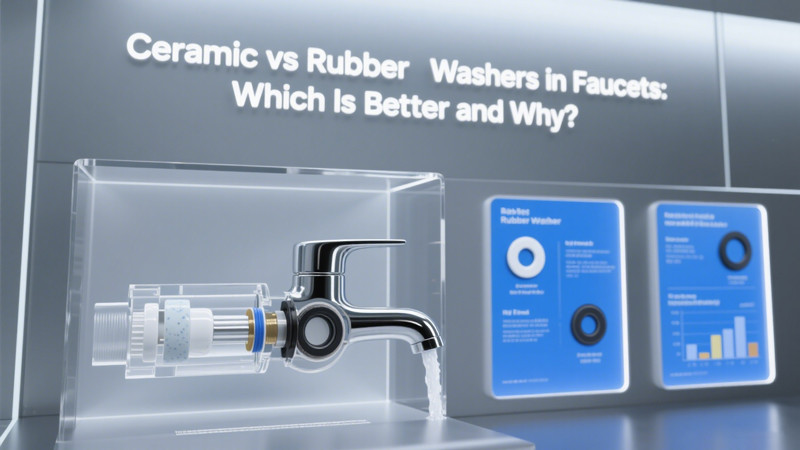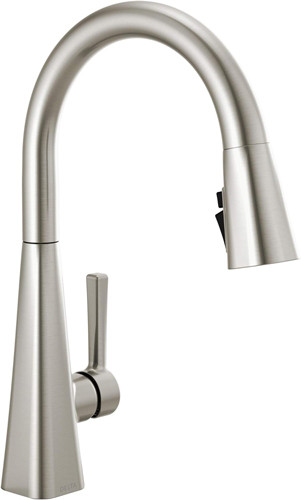
When your faucet starts to leak or the handle becomes hard to turn, it often signals an issue with the internal washer. But not all washers are created equal. The two most common types used in faucets today are ceramic and rubber washers. Each has its advantages and drawbacks, and understanding their differences can help you make better choices—whether you’re repairing a leak or buying a new faucet.
So, what sets ceramic and rubber washers apart? Let’s dive into how they work, where they’re used, and which one might be the best fit for your home or project.
What Is a Washer in a Faucet?
A faucet washer is a small, but essential component that helps control the flow of water and prevent leaks. It’s part of the valve assembly that seals the connection between the faucet and the water supply.
When you turn the faucet handle, the washer compresses or shifts to allow or block water flow. If the washer becomes worn, misaligned, or damaged, you’ll start to notice drips, squeaks, or a loose handle—hence the importance of choosing the right type.
Rubber Washers: The Traditional Choice
How They Work
Rubber washers, typically made of neoprene or another flexible rubber compound, are compression washers. As you turn the faucet handle, the washer presses down onto a valve seat to stop water flow. When you open the tap, the washer lifts off the seat, allowing water to pass.
Pros of Rubber Washers
- ✅ Affordable: Rubber washers are very inexpensive and widely available.
- ✅ Easy to Replace: Anyone with a basic tool kit can usually swap a rubber washer in minutes.
- ✅ Compatible With Older Faucets: Many older homes still use compression-style faucets that depend on rubber washers.
- ✅ Soft Operation: Rubber creates a good seal and can handle low-pressure systems well.
Cons of Rubber Washers
- ❌ Wear and Tear: Over time, rubber degrades—especially when exposed to hard water, heat, and pressure changes.
- ❌ Frequent Replacements: Because of their softness, rubber washers may need replacing every few years or even sooner.
- ❌ Susceptible to Leaks: Once a rubber washer cracks or flattens, leaks usually follow.
Ceramic Washers: The Modern Alternative
How They Work
Ceramic washers are not “washers” in the traditional sense, but rather ceramic disc cartridges. These cartridges contain two extremely hard, polished ceramic discs that move against each other to control water flow. The seal is created by the flat, smooth surface of the discs—not by compressing a soft material.
Pros of Ceramic Washers
- ✅ Durability: Ceramic discs are extremely hard and can last 10–20 years or more under normal conditions.
- ✅ Smooth Operation: Handles turn with minimal effort—no more stiff, squeaky taps.
- ✅ Drip-Free Performance: Because they rely on precision-fit discs rather than compression, ceramic cartridges are much less prone to leaks.
- ✅ Great for Hard Water: Ceramics are resistant to scale buildup and corrosion.
Cons of Ceramic Washers
- ❌ Higher Cost: Ceramic disc faucets and parts are more expensive than their rubber counterparts.
- ❌ Not DIY-Friendly: If a ceramic cartridge fails, replacing it can be more complicated, and usually requires finding the exact part from the faucet manufacturer.
- ❌ Compatibility: You can’t just pop a ceramic disc into a rubber washer faucet. You’ll need a compatible fixture.
Performance Comparison: Ceramic vs Rubber Washers
| Feature | Rubber Washers | Ceramic Washers |
|---|---|---|
| Lifespan | 1–5 years | 10–20 years |
| Price | Low | Medium to High |
| Leak Resistance | Moderate | Excellent |
| Water Pressure Tolerance | Good | Excellent |
| Ease of Repair | Very easy | Moderate to difficult |
| Suitable for Hard Water | Poor | Excellent |
Which One Should You Choose?
Choose Rubber Washers If:
- You have an older compression faucet.
- You’re on a tight budget.
- You’re comfortable with simple DIY plumbing tasks.
- You don’t mind replacing washers occasionally.
Choose Ceramic Washers If:
- You’re installing or upgrading to a modern faucet.
- You want longevity and leak-proof performance.
- You live in a hard water area.
- You’re okay with a higher up-front cost for lower maintenance over time.
Final Thoughts
Both rubber and ceramic washers have their place in faucet design and repair. Rubber washers may be more common in older systems and cost-effective DIY projects, but ceramic disc technology is quickly becoming the gold standard for performance and durability in modern plumbing.
If you’re dealing with persistent leaks, stiff handles, or are planning a bathroom or kitchen remodel, it’s worth considering a faucet with a ceramic cartridge. The extra investment can save you time, frustration, and money in the long run.
That said, if you’re working with an older faucet or looking for a quick fix, there’s nothing wrong with sticking to a rubber washer—as long as you know it may need a bit more maintenance down the road.
Pro Tip: If you’re unsure what type of washer your faucet uses, turn off the water, disassemble the handle, and take a look inside. If you see a squishy black disc, it’s rubber. If you see a cartridge with smooth ceramic discs, you’ve got a ceramic faucet.
Whether you’re upgrading or repairing, understanding these key differences will help you make better plumbing decisions—one drip at a time.
 WOWOW Faucets
WOWOW Faucets





